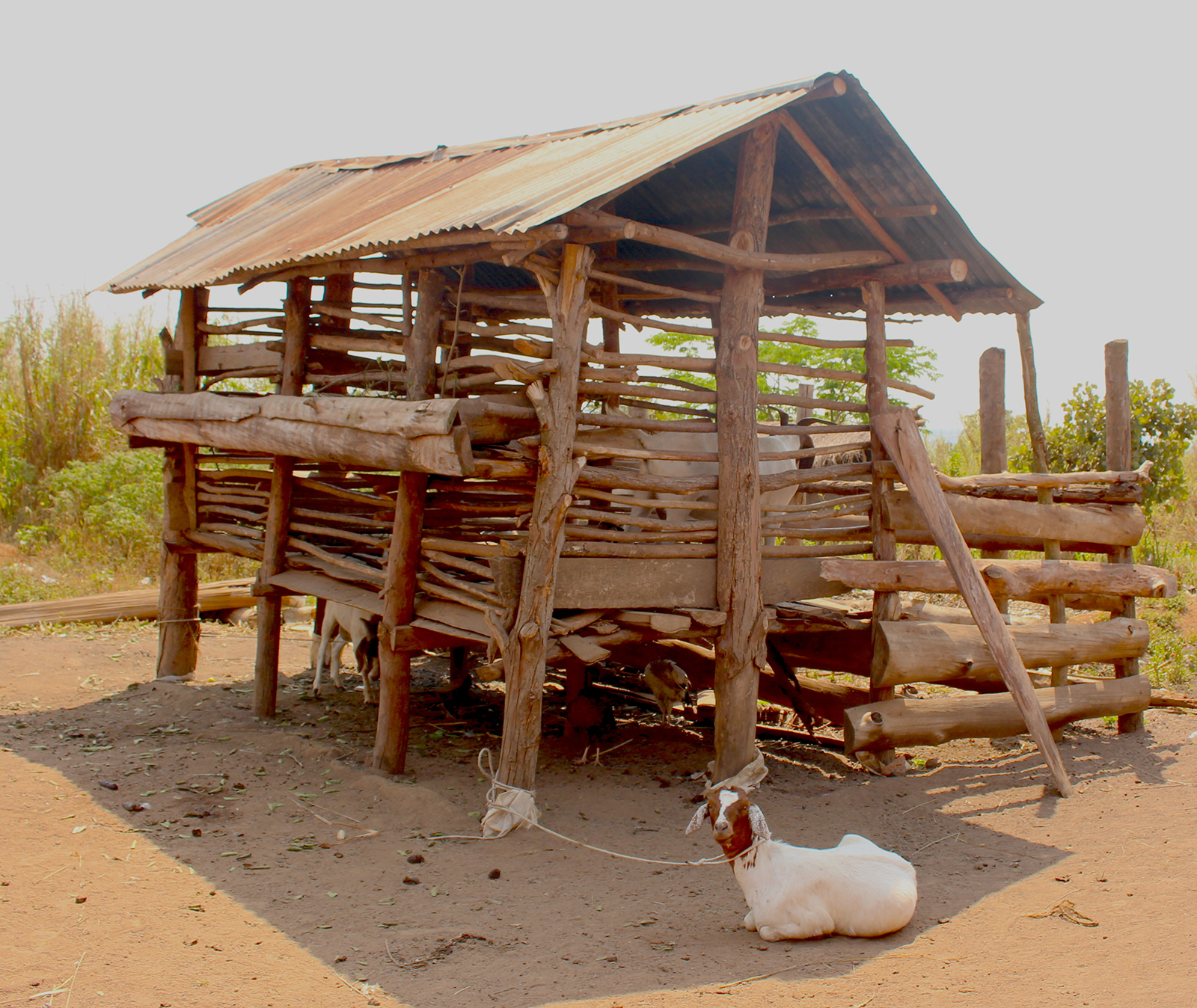How Jane Goodall’s legacy is alleviating poverty

HOIMA, UGANDA -- Many know Jane Goodall as the daring British secretary who lived with wild chimpanzees in Tanzania's Gombe Stream National Park, but her legacy includes much more. Goodall, who turned 80 this week, spreads her trademark message of hope for people and wildlife around the globe, yet fewer realize her legacy continues in Africa under the able leadership of locals. She founded the Jane Goodall Institute (JGI) in 1977, an early pioneer of community-based conservation. The approach has evolved from just hiring locals to "conservation through poverty alleviation."
"For a very long time we were very chimp-focused, mainly protecting the habitat," says Peter Apell, JGI-Uganda Field Programs Manager. "But we noticed the root of the problem lies with the very people who go into the forest – people logging commercially, or the poor communities who rely on natural resources in the forests. We found that the most logical approach would be to address aspects of their livelihood." JGI recently completed the pioneering Sustainable Livelihoods Project in Western Uganda, with a goal of reforesting riparian corridors between two forest patches where chimps live – while improving the livelihoods of rural villagers.
Goodall first applied a similar approach in Tanzania. "I flew over Gombe in 1992 and saw there were more people living there than the land could support," says Goodall in a phone interview. "I thought, 'There's no way we can save chimps while people are living in these terrible [conditions].'"
As a rule, JGI does not "parachute" into villages with solutions. Instead, they begin a dialogue with locals, identifying needs and solutions. Communities learn to run livelihood projects so that when JGI leaves, locals sustain the momentum. It's an idealistic model, but does it work? The paradigm-shifting approach embodies the 2009 Nobel-winning economics theory of the late Elinor Ostrom, who found that the optimal way to conserve forests while improving livelihoods involves empowering locals to solve their own problems.
In western Uganda, villagers said that their biggest concern was the lack of clean water nearby; it took women more than three hours to gather two liters of water daily. "[We told people] having trees along the riverbed will restore water flow. But they did not buy it. They said, 'When the wildlife comes back, the government will take our land and turn it into a reserve,'" says Apell.
But JGI's patience paid off. "We pointed out that just 20 years ago, that river used to flow and it would take five minutes to get their water. It dried up because the communities were farming right up to the river's edge and they were cutting all the trees, and whenever it rains, the soil would fill up the river. The elders would say, 'Actually that makes sense. When the trees were here, the river was here,' so we left them to talk and one by one they started listening."
JGI also knew people illegally hunted wildlife. So in addition to tree seedlings, JGI and Heifer International gave villagers alternative protein sources – pigs and Boer goats – which grow twice as fast as typical goats, frequently produce twins and triplets, and fetch five times as much on the market. JGI also provided improved crop seeds and honeybee hives as income-generating projects.

Boer Goats (Wendee Nicole)
The approach took time. "You don't want to go in there and immediately start dishing out pigs and goats," says Apell. "They will take them and then they refuse to plant the trees, which is what you wanted in the first place. You have to let them realize that beyond just having the desire for improved conservation, our institution also cares a lot about human welfare and they complement each other." To establish goodwill, JGI drilled one well per village. Before that, it took more than three hours for a woman or child to gather just 20 liters of water daily. Providing water is the government's job, but it can take decades to get wells installed, says Apell. "When we came in and did it in one year, they took us more seriously."
After the first participants to use JGI's improved crops and techniques had bumper harvests with farmers, everyone wanted in. The villages created a community association with interest groups advocating for their projects – pigs, goats, trees, crops, bees.
Bee hives (Wendee Nicole)
Joram Basiima, elected chairman of the community association, received a nanny goat named Hope. Since JGI lacked funds to give animals and seeds to everyone, the firstborn offspring, or seeds, get passed to others. Villagers even came up with their own innovation: When no one could afford to buy expensive Boer goats on the market, Basiima and others decided to breed them with local goats, creating hybrids they could sell.
JGI required all participants to install a pit latrine, grow a vegetable garden, and use a drying rack to keep dishes off the bare ground; they knew these would improve people's health. "This is actually a very positive change in the community," says Basiima.
JGI offered training in the various practices, like forestry and farming, honey harvesting, or livestock husbandry. People who planted trees could sustainably harvest some for income, while native trees reforested the landscape. "[Before] they saw trees as their enemy, but now they see 'I can make money from trees' so suddenly they want to plant more trees."
"Over 90% of the river line is recovered," says Basiima. "There was a lot of siltation, and the river itself was dying. In a dry period like this one there would be hardly any water, but now there is water going through."
Springs have also started reappearing. "I visited [Basiima's] home a lot, and one day, I saw spring water flowing," says Apell. "I asked 'Have you made a new spring?' and he was like, 'No no no! This spring has been here for decades but the water had stopped flowing. Now it's back.'" Apell attributes the restored groundwater table to changes in land use practices.
Joram Basiima (Wendee Nicole)
During the project's final evaluation, locals expressed concerns about the recent influx of people displaced by oil companies, people who have not learned about conservation. "They asked 'How are we going to protect what we have achieved?' says Apell. When he heard this, he felt that they now had 100% buy-in to the project, and it would sustain itself after they left. "They wanted this new status quo to stay."
"We used the river … for rallying support for regeneration of the forests," says Apell. "The advantage of riparian forests is that their recovery comes along with more socio-economic benefits – water, fish – as compared to terrestrial forests. Riparian forests do not take way a lot of arable land for subsistence use; this was the innovation and motivation."
Goodall would like to see this approach applied to other wildlife species around the world: "The only solution for conservation is to get the locals on your side. If that means improving their lives, then that's what we have to do."
Writer Wendee Nicole traveled to Uganda to report this story under the Mongabay.org Special Reporting Initiatives Program.
Sign up for our weekly newsletter featuring in-depth business innovation stories by correspondents around the globe, top domestic reporters and thought-provoking opinion columnists.
This post was originally published on Smartplanet.com